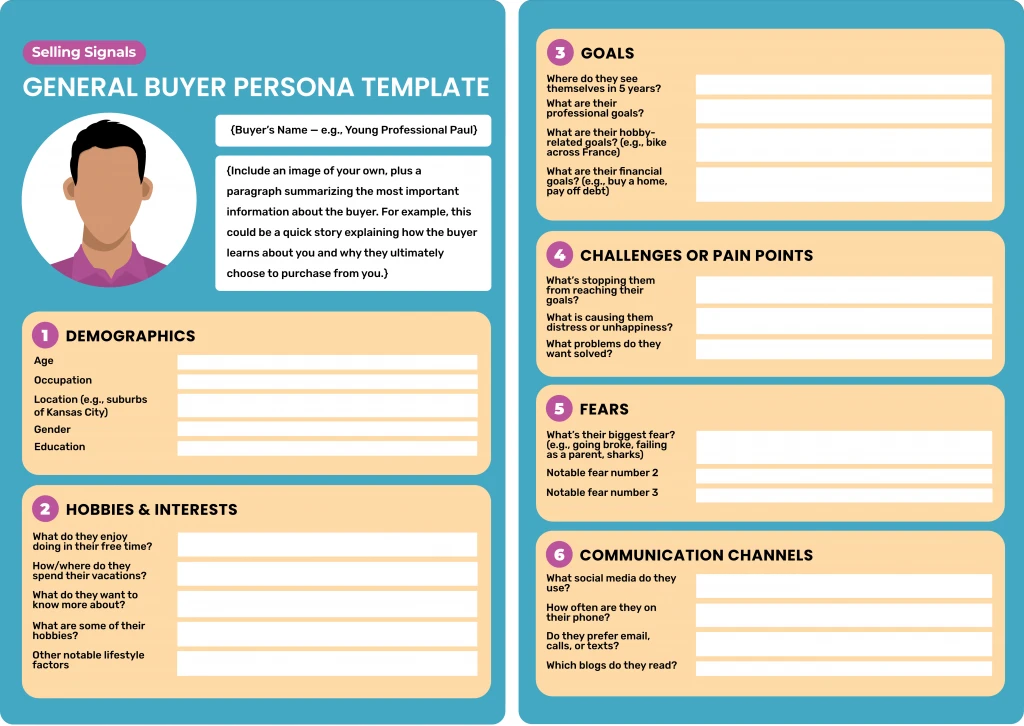5 Code Red Marketing Mistakes Tech Companies Make (and How to Fix Them)
Jun 28, 2024

As a CMO in the world of tech, you know the pressure is on. You have a killer product, and a passionate team, but if your marketing strategy isn't firing on all cylinders, your innovative creation could get lost in the digital noise and you are leaving money on the table.
Here's the good news: marketing isn't some dark magic reserved for the "creatives." It's about clear communication, data-driven decisions, and understanding your target audience on a deep level.
Let's tackle 5 critical marketing mistakes tech companies frequently make (and how to patch them for maximum growth):
1. Targeting the Wrong User: It's All About Buyer Personas
Tech companies can get caught up in the latest features and functionalities, forgetting who they're actually building these products for. Here's the fix: Conduct thorough market research to understand your ideal customer profile. Develop buyer personas that detail their needs, challenges, and preferred communication channels.
Below is a great example of what a General Buyer Persona Template can look like and you can download it here.

Tailor your marketing message to resonate with this specific audience. Don't waste marketing dollars on generic campaigns; target your efforts laser-sharp to convert high-value leads.
2. Brand Identity MIA: Craft a Compelling Narrative
A strong brand is more than just a fancy logo and tagline. It's the emotional connection you build with your customers. It's the voice, personality, and values that shine through everything you do, from your website design to your social media interactions. Here's the fix: Develop a clear brand identity that reflects your company's values and resonates with your target audience.
What can you find in a strong brand identity for tech companies?
Brand Mission Statement: A concise statement that captures your company's core purpose and why you exist.
Brand Vision: A forward-looking statement that describes your aspirations and where you see the company going.
Brand Values: The core principles that guide your company's decision-making and actions.
Brand Voice & Tone: The personality you convey in your communication, whether it's playful and innovative, professional and trustworthy, or something else entirely.
Visual Identity: This includes your logo, colour palette, typography, and imagery that creates a cohesive visual representation of your brand.
Why invest in a brand identity guide?
As your tech company scales and you collaborate with consultants, new team members, or even external marketing agencies, having a clear brand identity documented becomes crucial. A brand identity guide serves as a central source of truth, ensuring everyone involved portrays your brand consistently.
These guides can range in complexity and cost. A basic brand identity guide might start around $5,000, while a comprehensive document outlining everything from brand voice to brand storytelling can reach $50,000 or more.
The investment ultimately depends on your specific needs and the level of detail required. But remember, a strong brand identity is an investment that pays off in the long run, fostering brand loyalty, attracting top talent, and differentiating you from the competition.
Focus on Telling Your Brand Story
Think beyond features and benefits. Tell your brand story in a way that compels users to see your product as the solution they crave. Invest in brand storytelling to create a compelling narrative that positions your tech company as a leader in the space.
Bonus! Take a look at this colour physiology picture! While it not the be all end all it is still valuable to know. You can learn more here.
3. Value Proposition Vacuum: Focus on Benefits, Not Features
Tech companies often fall into the trap of highlighting every single feature their product boasts, resulting in a laundry list that leaves users confused and uninspired. Here's the fix: Create content that educates your audience about the problems your product solves and how it streamlines their workflows.
Focus on the "why" behind the features. How does your product make their lives easier, their businesses more efficient? Showcase the value proposition early on, and don't be afraid to offer free trials or demos to let users experience the magic for themselves.
Let's break this down with an example:
Feature-Focused Messaging: "Our new data management platform boasts cutting-edge AI-powered algorithms and real-time analytics!"
This tells users what the product has, but it doesn't explain why they should care.
Benefit-Focused Messaging: "Struggling to sift through mountains of data and make data-driven decisions? Our platform uses AI to automate complex tasks, freeing you to focus on what matters most – growing your business. Gain real-time insights and make smarter choices with our intuitive analytics dashboard. Sign up for a free trial today and see the difference!"
This revised message speaks directly to the user's pain points (data overload, difficulty making data-driven decisions) and highlights the benefits (automation, real-time insights, improved decision-making). It also includes a clear call to action (free trial).
Below is a great video to watch to better understand value selling.
Here are some additional examples across different tech sectors:
Project Management Software:
Feature: Kanban boards, task management tools.
Benefit: Increased team collaboration, improved project visibility, streamlined workflows.
Customer Relationship Management (CRM) Software:
Feature: Contact management, lead scoring, marketing automation.
Benefit: Improved customer service, faster lead conversion, personalized marketing campaigns.
Cybersecurity Software:
Feature: Advanced threat detection, data encryption, and network security monitoring.
Benefit: Enhanced business security, reduced risk of data breaches, peace of mind.
By reframing your communication to focus on the "why" behind the features, you can create a compelling value proposition that resonates with your target audience and drives them to take action.
4. Content Marketing Catastrophe: Content Strategy is King
Valuable content attracts qualified leads, establishes your company as a thought leader, and positions you as a trusted solution provider. But here's the catch: simply churning out generic content won't cut it. Here's the fix: Develop a content strategy that includes a variety of formats tailored to your target audience's needs and interests.
Here are some examples of how tech companies in different sectors can leverage content marketing to achieve dominance:
A. XR Space (Extended Reality):
Target Audience: Developers, designers, marketing professionals, and potential enterprise users interested in VR/AR applications.
Content Formats:
Blog Posts: "5 Ways VR Can Revolutionize Employee Training Programs," "The Future of AR Shopping: How Brands Can Create Immersive Experiences."
Webinars: "Demystifying the Metaverse: Opportunities and Challenges for Businesses."
Case Studies: Showcase successful VR/AR implementations in different industries (e.g., healthcare, manufacturing, retail).
Interactive Content: Develop an AR app showcasing a product or service, allowing users to experience it virtually.
B. Defense Space:
Target Audience: Military personnel, government agencies, defense contractors, and decision-makers involved in procurement. (Due to the nature of the industry, some content may require stricter access controls.)
Content Formats:
White Papers: "The Rise of Autonomous Weapon Systems: Challenges and Considerations." (Note: Ensure compliance with any industry regulations regarding sensitive information.)
Industry Reports: "Emerging Trends in Cybersecurity for Defense Applications."
Infographics: "Comparing Combat Vehicle Capabilities: A Visual Guide." (Omit confidential information.)
Podcasts: Interviews with industry experts discussing defense technology advancements. (Maintain information security protocols.)
C. Quantum Computing:
Target Audience: Scientists, researchers, technology enthusiasts, and executives in industries that can benefit from quantum computing (e.g., finance, pharmaceuticals, materials science).
Content Formats:
Blog Posts: "Breaking Down the Hype: What You Need to Know About Quantum Computing."
E-books: "A Beginner's Guide to Quantum Algorithms and their Applications."
Video Explainers: Demystify complex quantum computing concepts through engaging animations.
Industry Trends Reports: Analyze the evolving landscape of quantum computing and its potential impact on various sectors.
D. B2B SaaS (Software-as-a-Service):
Target Audience: Business decision-makers, IT professionals, and department heads looking for solutions to streamline their operations and improve efficiency.
Content Formats:
Case Studies: Showcase how other businesses have successfully used your SaaS platform to achieve specific goals (e.g., increased sales, improved customer service).
Customer Testimonials: Feature video testimonials from satisfied customers raving about the benefits of your SaaS product.
Free Trials & Demos: Offer free trials or demos to allow potential clients to experience your SaaS platform firsthand.
Webinars & Online Courses: Host educational webinars or online courses demonstrating the functionalities and value proposition of your SaaS solution.
By understanding your target audience's needs and crafting valuable content that addresses their specific challenges and interests, you can establish your tech company as a thought leader and a trusted partner in their technological journey. Remember, the key is to focus on high-quality, informative content that educates, inspires, and ultimately drives conversions.
5. SEO? Never Heard of Her: Organic Traffic is Your Goldmine
If your target audience can't find your website in a Google search, it's like having a hidden treasure chest – full of potential customers, but no one knows it exists! Here's the fix: Optimize your website and content for relevant keywords. Utilize tools like Google Keyword Planner to research high-volume, low-competition keywords that your ideal customers are searching for.
Prioritize organic traffic. Paid advertising can be a great tool, but a strong SEO foundation ensures your website ranks organically, appearing at the top of search results for relevant searches. This positions you in front of potential customers actively seeking solutions your product offers, generating a steady stream of qualified leads.
Let's put SEO into action with some real-world examples for different tech companies:
Example 1: Cloud Storage Company
Target Keywords: "best cloud storage for businesses," "secure online file sharing," "cloud storage for collaboration," "[competitor name] alternatives"
Content Ideas: Blog posts on "Top 5 Cloud Storage Security Features," "The Ultimate Guide to Choosing the Right Cloud Storage Solution for Your Business," case studies showcasing how businesses use their cloud storage to improve efficiency.
On-Page Optimization: Include relevant keywords in page titles, meta descriptions, and throughout website content.
Example 2: E-commerce Marketing Platform
Target Keywords: "e-commerce marketing automation tools," "increase online store conversion rates," "best CRM for e-commerce," "tips for growing an e-commerce business"
Content Ideas: Create informative guides like "E-commerce Marketing Automation for Beginners," conduct industry research and publish reports on "The State of E-commerce in 2024," host webinars with industry experts discussing "E-commerce Growth Strategies."
Technical SEO: Ensure your website is mobile-friendly, has a fast loading speed, and uses a clear and crawlable site structure for search engines.
Example 3: Cybersecurity Software Company
Target Keywords: "cybersecurity solutions for small businesses," "data breach prevention strategies," "compliance with industry regulations," "[specific cybersecurity threat] protection"
Content Ideas: Develop informative infographics on "Common Cybersecurity Threats Businesses Face," offer free downloadable resources like "The Ultimate Cybersecurity Checklist for Businesses," and publish thought leadership articles on emerging cybersecurity trends.
Local SEO (if applicable): If your company has a local presence, optimize your website with local keywords and claim your Google My Business listing.
Remember, SEO is an ongoing process. Regularly research new keywords, monitor your website's performance, and adapt your strategy to stay ahead of the curve and attract organic traffic that converts.
Ready to Future-Proof Your Marketing Strategy?
Fello Agency is a top agency for tech companies pushing the boundaries in hardware and software. Our clients include leading companies in the XR space, Quantum space, and many more. We're here to help you leverage the future of marketing with a free consultation. Contact us today!
